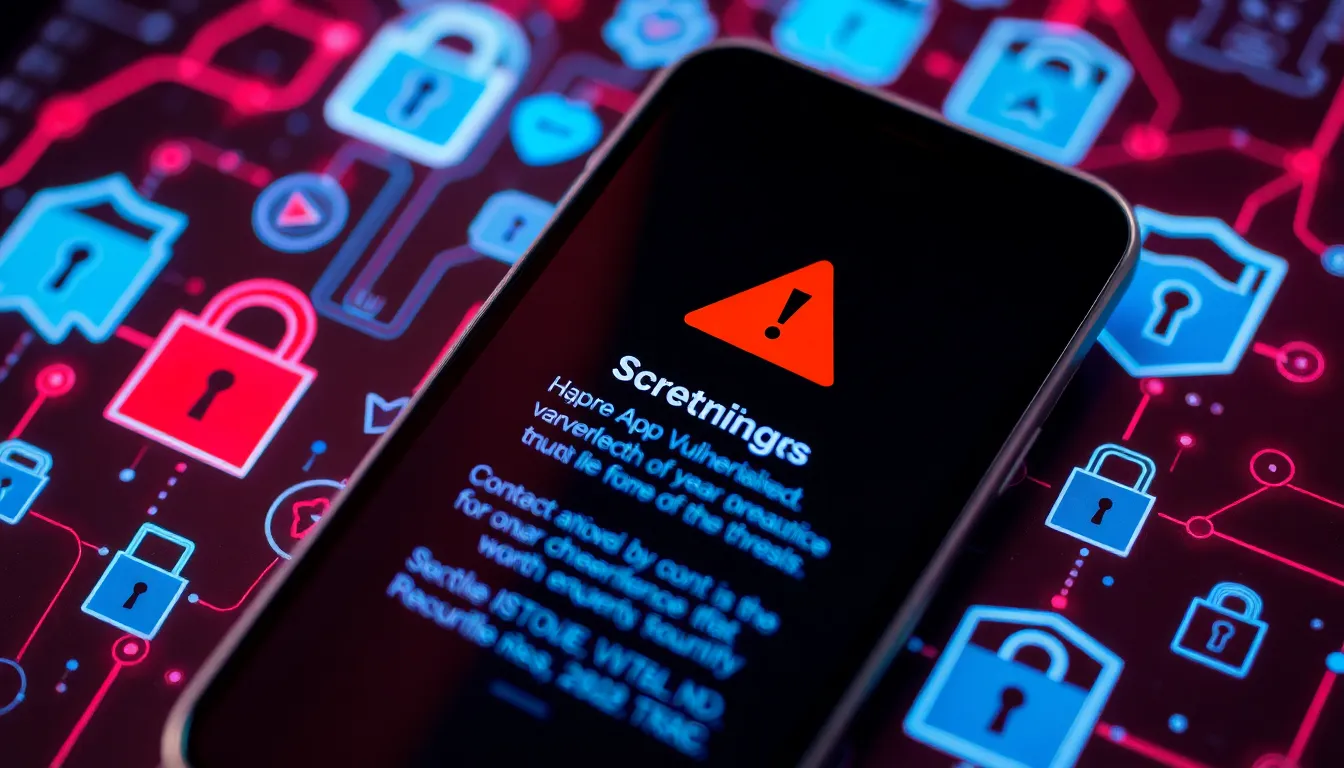Table of Contents
ToggleIn today’s digital landscape, mobile apps are an integral part of daily life, offering convenience and connectivity at our fingertips. However, as their popularity surges, so does the risk of security threats. Cybercriminals are constantly devising new methods to exploit vulnerabilities, making mobile app security a critical concern for developers and users alike.
Understanding the importance of robust security measures can safeguard sensitive data and maintain user trust. From encryption to secure coding practices, a proactive approach is essential in protecting against potential breaches. As mobile technology continues to evolve, staying informed about the latest security trends and best practices is vital for anyone involved in app development or usage.
Overview Of Mobile App Security
Mobile app security encompasses the measures taken to protect mobile applications from unauthorized access, data breaches, and other vulnerabilities. Given the prevalent use of mobile devices, the significance of securing these applications cannot be overstated. Users trust apps with sensitive information, making it crucial for developers to create secure environments.
Key aspects of mobile app security include:
- Data Encryption: Encrypting sensitive data both at rest and in transit safeguards it from unauthorized access.
- Authentication: Implementing strong authentication methods, such as multi-factor authentication (MFA), significantly enhances user account security.
- Secure Coding Practices: Following established coding guidelines reduces the risk of common vulnerabilities, such as injection attacks and insecure data storage.
- Regular Security Audits: Conducting frequent security assessments identifies and mitigates potential risks before they can be exploited.
- User Education: Educating users about security best practices fosters awareness, enabling them to protect their personal information more effectively.
- Updates and Patch Management: Regularly updating apps and applying security patches addresses newly discovered vulnerabilities, ensuring ongoing protection.
Adopting these strategies strengthens mobile app security, providing users with confidence in the safety of their personal and financial data.
Common Security Threats

Mobile apps face several security threats that can compromise sensitive information and user privacy. Understanding these threats is crucial for developers and users alike.
Malware Attacks
Malware attacks infect mobile devices through malicious software, often hidden in seemingly legitimate apps. These attacks can lead to unauthorized data access, data theft, or device malfunction. According to a report by Cybersecurity Ventures, mobile malware is projected to affect one in every five mobile devices by 2025. Users should download apps only from trusted sources and maintain updated antivirus software to mitigate these risks.
Data Breaches
Data breaches occur when unauthorized parties gain access to sensitive user data, often through inadequate security measures. An industry report revealed that 50% of mobile apps are vulnerable to data breaches due to poor encryption practices. Developers must implement strong encryption methods for data at rest and in transit, conduct regular security audits, and comply with data protection regulations like GDPR and CCPA to minimize the risk of breaches.
Insecure Code Vulnerabilities
Insecure code vulnerabilities arise from poor coding practices, leaving apps susceptible to attacks such as SQL injection and cross-site scripting. The Open Web Application Security Project (OWASP) lists insecure code as a top risk in their Mobile Top Ten list. Developers should follow secure coding standards and conduct thorough code reviews to identify and fix potential vulnerabilities before deploying mobile apps.
Best Practices For Mobile App Security
Adopting best practices for mobile app security is essential for protecting user data and ensuring application integrity. Developers should implement various strategies to minimize vulnerabilities and enhance overall security.
Secure Coding Techniques
Employing secure coding techniques is crucial for preventing common security flaws. Developers should:
- Validate input to avoid injection attacks, such as SQL injection or cross-site scripting (XSS).
- Sanitize output to ensure only safe data is presented to users.
- Use secure libraries and frameworks to reduce the risk of vulnerabilities from third-party tools.
- Implement error handling without revealing sensitive information to potential attackers.
- Follow coding standards that emphasize security through code reviews and best practices.
Regular Security Audits
Conducting regular security audits helps identify potential vulnerabilities and weaknesses within the app. Developers should:
- Schedule audits annually or after significant updates to assess security posture.
- Engage third-party testers to provide an unbiased evaluation of the app’s security.
- Perform penetration testing to simulate attacks and uncover exploitable weaknesses.
- Review dependencies for vulnerabilities using automated tools that check against known databases.
- Document findings and implement corrective actions based on audit results.
User Authentication Measures
Implementing robust user authentication measures strengthens access control. Developers should:
- Utilize multi-factor authentication (MFA) for an extra layer of security beyond passwords.
- Enforce strong password policies that require a combination of letters, numbers, and special characters.
- Limit login attempts to prevent brute-force attacks.
- Incorporate biometric authentication methods such as fingerprint or facial recognition for added convenience and security.
- Encrypt sensitive authentication data like passwords to protect user credentials during transmission and storage.
By focusing on secure coding, regular audits, and strong authentication measures, developers can significantly enhance mobile app security and safeguard user information.
Mobile App Security Tools
Mobile app security tools play a crucial role in protecting applications from various threats. Implementing these tools enhances security measures and builds user trust in mobile applications.
Encryption Solutions
Encryption solutions secure sensitive data within mobile apps, ensuring unauthorized users cannot access essential information. Tools like AES (Advanced Encryption Standard) and RSA (Rivest-Shamir-Adleman) provide strong encryption algorithms for data at rest and in transit. For example, AES-256 encryption protects user data stored on devices, while SSL/TLS protocols secure data transmitted over networks. Moreover, employing end-to-end encryption ensures that only authorized users can decrypt messages, safeguarding against potential eavesdroppers. Adopting these solutions significantly reduces the risk of data breaches and enhances overall application security.
Vulnerability Scanners
Vulnerability scanners are essential tools for identifying security weaknesses in mobile applications. These scanners automate the process of testing apps for common vulnerabilities, such as those outlined in the OWASP Mobile Top Ten. Tools like Veracode, ZAP (Zed Attack Proxy), and Burp Suite offer comprehensive assessments of application code, configurations, and third-party libraries. For instance, Veracode provides detailed reports on vulnerabilities, enabling swift remediation by developers. Regular use of vulnerability scanners helps maintain a proactive security posture by discovering and addressing potential risks before they can be exploited. Incorporating these tools into the development lifecycle fosters robust mobile app security.
Future Trends In Mobile App Security
Emerging trends in mobile app security reflect advancements in technology and evolving threat landscapes.
- Artificial Intelligence (AI) Implementation
AI predicts and identifies security vulnerabilities. AI-powered tools detect anomalous behaviors, enabling swift responses to potential threats. Developers leverage machine learning algorithms to enhance security measures, automating responses to evolving attack patterns.
- Zero Trust Security Model
The zero trust model shifts defense strategies to assume no user or device is inherently trustworthy. Each access request undergoes rigorous verification. This approach limits potential risks from breaches while securing sensitive data.
- Increased Use of Biometric Authentication
Biometric methods, such as facial recognition and fingerprint scanning, offer enhanced security for mobile apps. Since these methods provide unique user verification, they reduce reliance on traditional passwords, which can be easily compromised.
- Continuous Security Monitoring
Implementing continuous monitoring solutions enables real-time assessment of app security. Automated systems track ongoing vulnerabilities, ensuring prompt detection of threats. Developers benefit from this proactive approach to addressing security issues as they occur.
- Emphasis on Secure Development Lifecycle (SDLC)
Adopting SDLC enhances mobile app security from conception to deployment. Integrating security at each development stage mitigates risks early in the process. This practice results in more resilient applications.
- Compliance with Privacy Regulations
Stricter regulations, such as GDPR and CCPA, demand robust data protection measures. Developers prioritize compliance to avoid penalties and build user trust. Regular audits ensure adherence to evolving legal requirements.
- Increased Focus on Third-Party Security
Many applications integrate third-party services, necessitating enhanced scrutiny of these providers. Developers assess these integrations to ensure security standards align with their own, minimizing risks associated with external components.
By recognizing and adopting these future trends, developers can strengthen the security of mobile applications, safeguarding user data against emerging threats.
Mobile app security is more critical than ever as the reliance on apps continues to grow. Developers must embrace robust security measures to protect user data and maintain trust. By implementing strong encryption, secure coding practices, and regular audits, they can mitigate risks associated with common threats like malware and data breaches.
Staying informed about evolving security trends and tools is essential for maintaining a proactive security posture. As technology advances, integrating AI and adopting a zero trust model will become increasingly important. Ultimately, prioritizing mobile app security not only safeguards sensitive information but also enhances user confidence in the applications they rely on daily.




